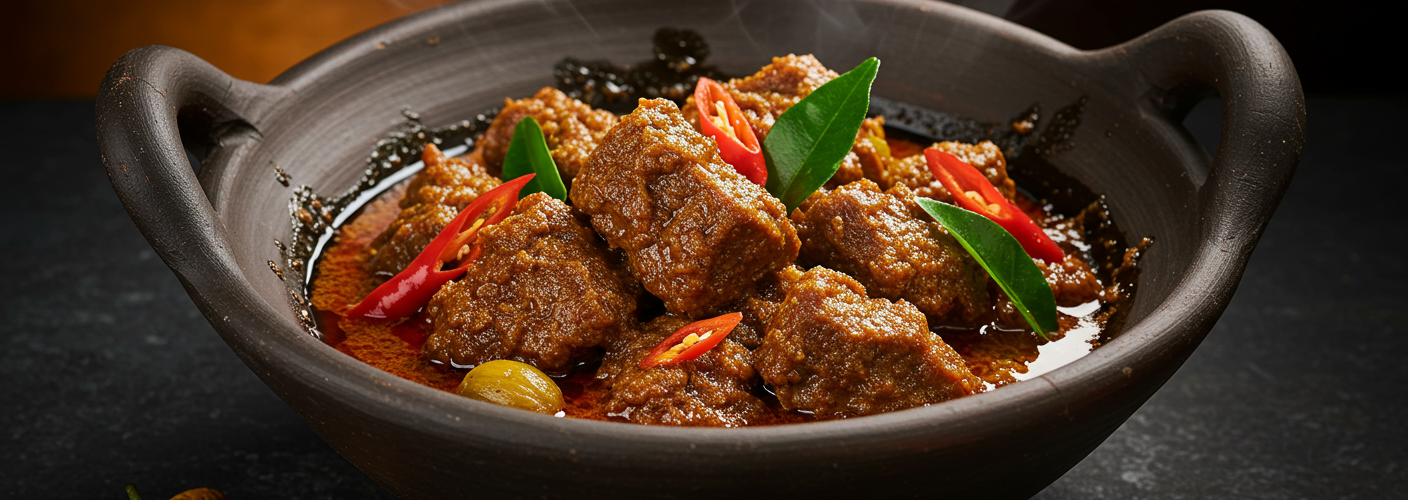Malaysian cuisine is a vibrant tapestry of flavors, and few dishes represent this culinary heritage as beautifully as Rendang. This sumptuous coconut beef stew is a staple in Malaysian households and is celebrated for its complex flavors that resonate deeply with the culture and traditions of the region. Whether you are a seasoned chef or a newcomer to Asian flavors, mastering Rendang can be a rewarding culinary endeavor that brings a taste of Malaysia right into your home.
The Origins of Rendang
Rendang, known as “Randang” in some regions, hails from the Minangkabau ethnic group of West Sumatra, Indonesia, but has become a beloved dish throughout Malaysia. Traditionally, it is served during significant ceremonies and gatherings as a symbol of respect and hospitality. Its rich history reflects the melding of cultures in Southeast Asia, making it a dish that tells a story of love, community, and celebration.
The Ingredients That Make Rendang Special
At its core, Rendang is a beef stew that revolves around a few key ingredients and aromatics that contribute to its distinct flavor profile. The star ingredient, of course, is the beef, generally cubed chunks of a tougher cut that can withstand long, slow cooking to achieve tenderness. Here are the essential components to create an authentic Malaysian Rendang:
- Beef: Chuck or brisket are ideal for their rich flavor and ability to become tender through slow cooking.
- Coconut Milk: This forms the base of the stew, lending it a creamy texture and unmatched depth of flavor.
- Spices: A signature blend of spices including turmeric, lemongrass, lime leaves, ginger, galangal, and chilies, elevates the dish with aromatic notes that transport you to the heart of Malaysia.
- Shallots and Garlic: These ingredients are critical for building the foundational flavors.
- Palm Sugar: This adds a subtle sweetness to balance the dish’s richness.
The Cooking Process
The preparation of Rendang is an art form that requires patience and attention to detail. The process typically begins with marinating the beef in a blend of spices, allowing the flavors to meld beautifully. Once marinated, the meat is simmered in coconut milk along with the spice paste made from shallots, garlic, and other aromatics. The slow cooking process is essential, as it allows the flavors to concentrate and the meat to break down and absorb the spices fully.
Traditionally, Rendang is cooked until the sauce thickens and clings to the beef, caramelizing the exterior and bringing out an intricate depth of flavor. Often, it is said that the longer Rendang cooks, the better it tastes. On special occasions, it is customary to prepare a big batch, as this dish is best enjoyed with family and friends, served alongside warm rice, roti, or even an array of side dishes.
Serving and Enjoying Rendang
When ready to serve, Rendang is not just a meal; it is an experience. The creamy, richly spiced beef pairs wonderfully with fragrant rice, allowing the two to complement each other perfectly. Some enjoy their Rendang with a side of vegetables or sambal to add a bit of freshness and heat. To fully immerse yourself in the experience, consider adding traditional Malaysian sides, such as pickled vegetables or a vibrant salad.
Conclusion
Rendang is more than just a dish; it is a representation of Malaysia’s rich cultural heritage and culinary expertise. As you take on the challenge of preparing this delectable coconut beef stew, you invite a piece of Malaysia into your kitchen, creating an unforgettable meal that brings loved ones together. Whether for a special occasion or a comforting weeknight dinner, Rendang is sure to delight and satisfy all who partake in its extraordinary flavors.




Add comment